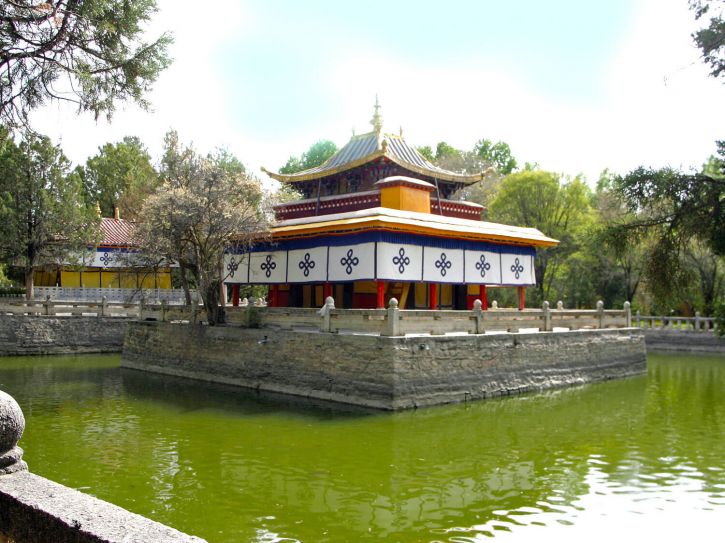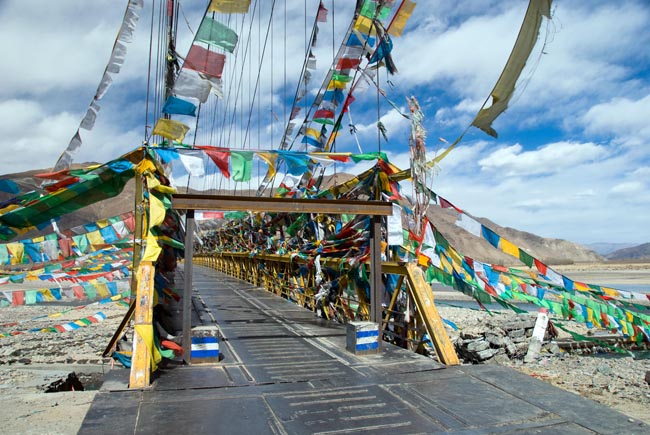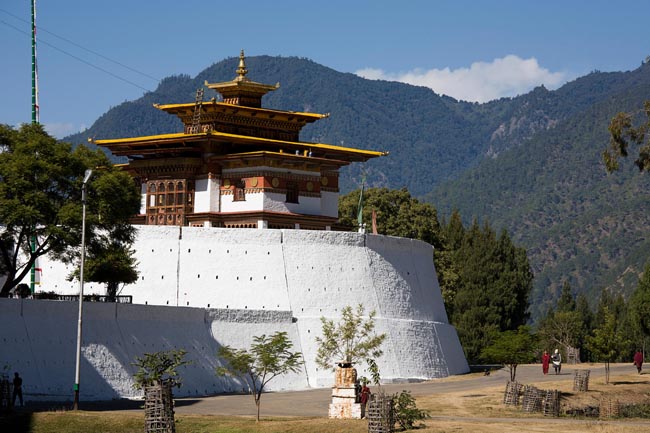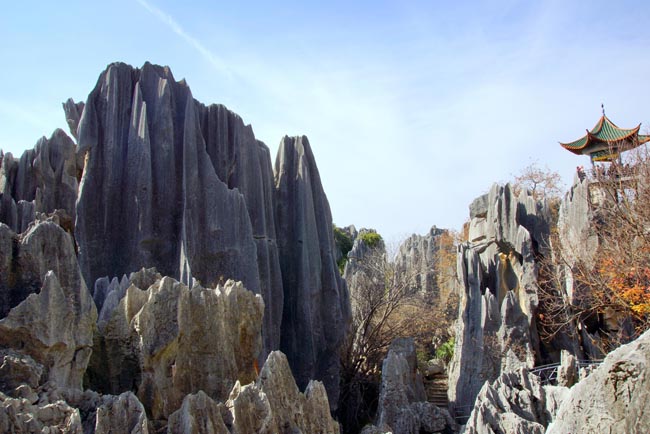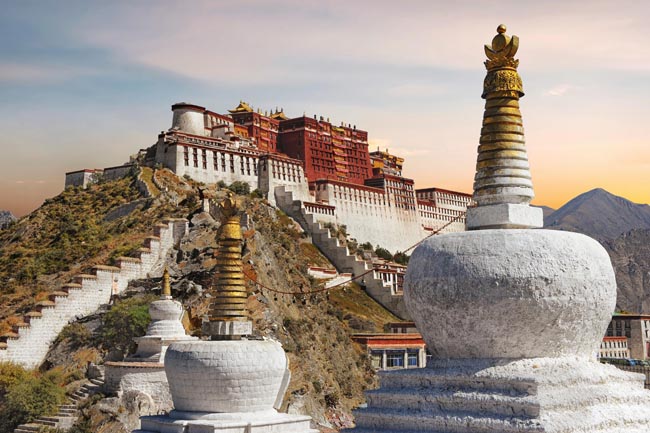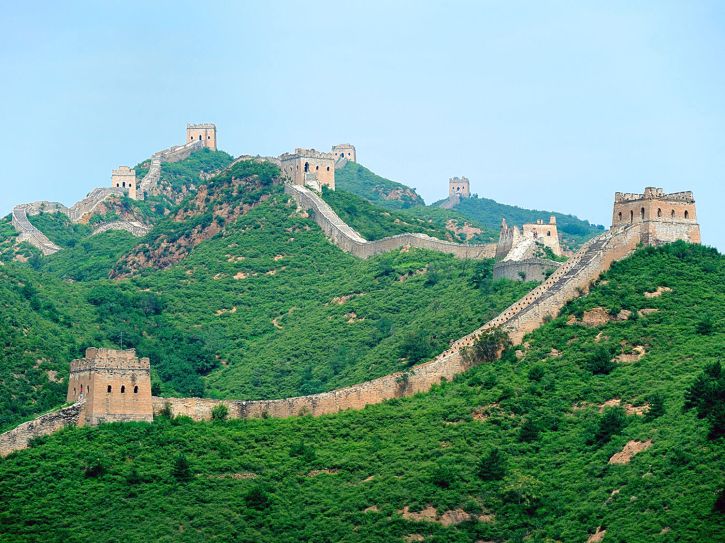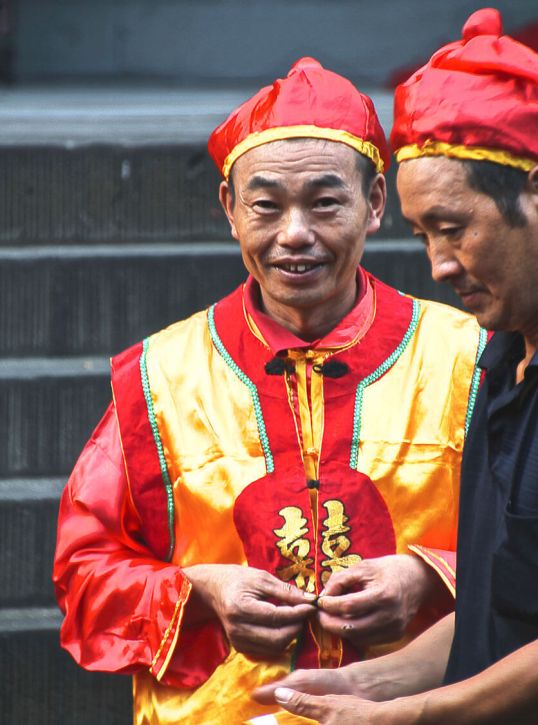The Ancient Tea Route was a network of mule caravan paths winding through the mountains of Yunnan Province in Southwest China. From around a thousand years ago, the Ancient Tea Route was a trade link from Yunnan, one of the first tea-producing regions: to India via Burma; to Tibet; and to central China via Sichuan Province. The route earned the name Tea-Horse Road because of the common trade of Tibetan ponies for Chinese tea.
This trip covers the 'must-sees' in Yunnan and Tibet and some of the more accessible sections of the ancient route. You will learn about distinctive cultures and religions on this trip. Rich with virgin forests and crystal blue lakes, this route offers spectacular scenery as well as an opportunity to come in contact with the primary village cultures of Yunnan and Tibet.
Prices below are per person, twin-sharing costs in US Dollars (USD). Pricing does not include airfare to/from the tour and any applicable taxes. For single supplement rates and taxes (if any), please refer to below Prices & Dates table. For general information on flights to/from the tour, click here.
Select a date below to reserve your spot:
Optional Single Supplement: $600 USD (number of singles limited).
Download Itinerary
Day 1 Arrival in Kunming
Today we arrive in Kunming, the provincial capital of Yunnan Province. The city lies 1891m (6,200 ft) above sea level and is majestically crowned on three sides by the dramatic mountain ranges of the Yunnan-Guizhou plateau.
Marco Polo made reference to this place as one of the most pleasant cities in China -- 'very great and noble' -- when he journeyed through it in the 13th century. As you drive in from Kunming's new airport, you are immediately struck by the modern highways and city infrastructure that China has put in place in a short span of two decades. Kunming is now designated a special tourism center.
Overnight in Kunming.
Included Meal(s): Dinner
Day 2 Kunming: The Stone Forest
We drive 120 kms east from Kunming to visit the impressive UNESCO designated World Heritage Site of The Stone Forest or Shilin National Park. According to an old local saying, if you have visited Kunming and not seen the Stone Forest, you have wasted your time. Tall rocks seem to emanate from the ground like stalagmites; many of these look like petrified trees creating the illusion of a forest made of stone.
The Stone Forest National Scenic Area covers an area of 350sq km and is divided into several scenic areas including the Major Stone Forest, the Minor Stone Forest and the Naigu Stone Forest, all of which feature rocks of various formations. Walking through the Stone Forest, you marvel at the natural stone formations and the clever manner in which visitor walkways have been built to allow you to experience the best parts. Legend has it that the Forest was the birthplace of Ashima, a beautiful girl of the Yi ethnic minority. When she was forbidden to marry her lover, she turned into a stone in the forest that still bears her name.
Mongol and Chinese dynasties have left their mark here in the form of pagodas and the magnificent Yuantong temple in Kunming, the largest Buddhist shrine in Yunnan and a popular destination for pilgrims who come to marvel at the dragon sculptures and huge golden Maitreya (Future) Buddha statue.
Time permitting, we will briefly visit the old wooden-alley district of old Jini Lu, a lively and colourful place with many shops, bars, and restaurants.
Overnight in Kunming.
Included Meal(s): Breakfast and Dinner
Day 3 Kunming - Dali
Today we travel by road (+/- 5 hours) across the plateau toward the stunning Cangshan Mountains that rise to 4000m (13,200 ft) from the shores of tranquil Lake Erhai. Our destination is the quiet lakeside city of Dali (1992 m / 6,500 ft).
Dali's mountainous setting, it's proximity to the huge Lake Erhai, and traditional stone buildings that line the cobbled streets combine to give this historic city an enchanting ambience. We will take time to meander down Hugo Lu and other ancient streets, dawdling in stone built cafes and generally soaking up the atmosphere.
Located in a dramatic setting at the foot of the towering Cangshan Mountains are the Three Pagodas built from the 9th Century onwards. In 1978, more than 700 Buddhist antiques, including sculptures made of gold, silver, wood or crystal and documents, were found in the structureof the main pagoda during major repair works. The designers of the pagoda are supposed to have come from Xi'an, the capital of Tang Dynasty of the time and the location of another pagoda, The Small Wild Goose Pagoda, which shares a similar style.
Overnight in Dali.
Included Meal(s): Breakfast and Dinner
Day 4 Dali - Erhai Lake & Xizhou - Lijiang
Down at Erhai Lake, the 7th largest in China, wooden junks peacefully ply the calm waters in search of the day's catch. Local fishermen still use the traditional method of using trained cormorants to fish. We will go on a boat ride on the lake to see this fishing technique up close.
Later we visit a typical Bai minority residence in the village of Xizhou where we enjoy a refreshing tea and observe Bai architecture, art, and culture. The distinctive Bai race (Bai comprise nearly half of the Dali population) are of Tibeto-Burmese origin and have long established roots in the Erhai Lake region stretching back 3,000 years.
We continue northwards to the delightful alpine town of Lijiang (elevation 2400m / 7,900 ft). The Old Town of Lijiang, which is perfectly adapted to the hilly topography of strategic site, has retained a historic townscape of high quality and authenticity. Its architecture is noteworthy for the blending of elements from several cultures that have come together over many centuries. Lijiang also possesses an ancient water-supply system of great complexity and ingenuity that still functions effectively today. It is for these reasons that Lijiang was designated as a World Heritage Site.
Overnight in Lijiang.
Included Meal(s): Breakfast and Dinner
Day 5 Lijiang Old Town & The Black Dragon Pool
Lijiang town grew up as a migration centre for Tibetan nomads; however, the matrilineal Naxi tribe were the most significant settlers in the area. Today the women can still be seen in their blue cotton trousers and sheepskin capes. Much of Naxi architecture remains preserved and the distinctive two storey wood framed Naxi houses with earthen sidewalls can readily be seen alongside the criss-crossed canals and red granite streets that dominate old Lijiang.
From our hotel located in the heart of the old town we will do a walking tour to explore the canal lined alleyways of Lijiang and the Mu Family mansion, once the residence and office of the Naxi rulers of Lijiang. The mansion was built during the Ming Dynasty (1368-1644) for the ruling family of the area who governed the Lijiang region during Yuan, Ming and Qing Dynasties, lasting for 22 generations.
Dominating the entire Lijiang Valley is Jade Dragon Snow Mountain. This afternoon we will visit the Black Dragon Pool and the Jade Spring Park. The place derives its name from waters that 'sparkle like jade'. The entire park is grassy and shaded by swaying willow trees. Under the Shuocui Bridge, a waterfall creates a constant roar as it cascades downstream. The park has some stunning photographic opportunities with the pond and Five Phoenix Pavilion in the foreground and the summit of the Jade Dragon Snow Mountain as a backdrop.
This evening, we plan to head out 16 kms north to the rural countryside to visit the Naxi village of Baisha where life has largely been unaffected by the changes that have transformed most of China. Baisha is well known for its Ming Dynasty era frescoes, 600 year paintings on a wall that combines the religious icons of three religions that thrived together -- Taoism, Mahayana Therawada Buddhism and Tibetan Buddhism.
Overnight in Lijiang.
Included Meal(s): Breakfast and Dinner
Day 6 Lijiang: Free Day
Old Lijiang's alleys, parks and canals (all designated a World Heritage Site) are best explored at leisure. We have the day to browse in the interesting stores that line the narrow streets, sample the local street food cooked right in front of you or simply watch people go by from a canal side cafe.
Overnight in Lijiang.
Included Meal(s): Breakfast and Dinner
Day 7 Lijiang - Shangri La (Zhongdian)
Today we drive to the ethnic Tibetan town of Zhongdian, now officially renamed Shangri La (+/- 6.5 hours), with stops at the First Bend of the Yangtze River and the village of Shigu (the Stone Drum village). We will have a look at the first great bend of the Yangtze River where the river makes a 180 degree turn over 20 km, first flowing south, then north, running parallel to itself. Locals say if it were not for their village standing guard at the bend, China would lose the water of the Yangtze to southeast China, like the Mekong and Salween rivers.
At 3300m (10,800 ft) above sea level lies Zhongdian (Gyalthang in Tibetan), "the Land of Limitless Bounty," and the capital of the Diqin Tibetan Autonomous Prefecture. This is an idyllic town rumoured to be the model for the utopian "Shangri-La" described in James Hilton's 'The Lost Horizon.' Indeed the government has officially renamed Zhongdian "Shangri-la" in 2001 in order to enhance its tourism trade.
Overnight in Shangri La.
Included Meal(s): Breakfast and Dinner
Day 8 Shangri La Area: Songzanlin Monastery
Bordering Tibet and Sichuan Province, Zhongdian occupies a spectacular high plateau at the heart of the Hengduan Mountains. Today we visit the largest Tibetan Buddhist monastery in Yunnan, Songzanlin Monastery, also known as Guihua Monastery or the 'Little Potala', located near Shangri-La County at the foot of Foping Mountain.
Since the 5th Dalai Lama chose the site through divination in 1679, the monastery has grown into the most important community of its kind in Yunnan. Naturally, throughout its history spanning 325 years there have been ups and downs -- the Cultural Revolution (1966-1976), for instance, saw the lamasery almost completely destroyed -- but the strong faith of the people of Shangri-La has always prevailed and today Songzanlin once again houses more than 700 monks and lamas.
Built in the style of Potala Palace in Lhasa, Tibet, the magnificent monastery complex resides on top of a hill and consists of the two Zhacang and Jikang lamaseries -- which take on the form of five-story Tibetan watchtowers -- five gates, numerous sub-lamaseries and hundreds of rooms for the monks. Walking up the 146 steps that lead to the main prayer hall is a tiring exercise at 3300 m (10,400 ft) above sea level, but it allows you to trace mentally the pilgrimage route that generations of devout Buddhists living on the plateau take on their knees and foreheads every year.
We return to Zhongdian with leisure time to enjoy this charming town.
Overnight in Shangri La.
Included Meal(s): Breakfast and Dinner
Day 9 Shangri La - Lhasa
Today we fly to Lhasa, Tibet.
We will be met by our Tibetan guide on arrival and drive along the flat valley of the Tsangpo River to our comfortable hotel in Lhasa (3650 m / 12,045 feet). Balance of the day at leisure to acclimatize to the altitude.
Overnight in Lhasa.
Included Meal(s): Breakfast and Dinner
Day 10 Lhasa: the Jokhang
We have an easy morning to acclimatize followed by a visit to the Jokhang, the religious and geographical centre of Lhasa, and the most important temple in the world for all sects of Tibetan Buddhism. Pilgrims from across Tibet, many of whom have walked hundreds of kilometres to see the Jokhang once in their lives, queue for hours to enter the temple and perform a ritual circuit in prostration of its many sacred shrines. It is a moving experience to join them in the dark hallways, filled with the sound of low chanting, lit only by butter lamps. The main image worshipped here is Jowo Rinpoche, a gilded statue of Buddha Sakyamuni said to have been modeled during his lifetime.
The Jokhang is encircled by the Barkhor, an 800m (2,645 feet) flagstone pathway that is both a sacred circumambulation route and the biggest bazaar in all of Tibet. Night and day, Tibetans walk clockwise around it, earning religious merit as they shop, people-watch and chat with friends. Here you find people from all corners of Tibet: striking, tall Khampa men from the east with big knives and red tassels wrapped about their heads; Golok women with their hair plaited in 108 tiny braids; nomad families bundled in sheepskins. The Barkhor is the real heart of Tibet, you can spend hours watching the passing parade or bargain for the trinkets and souvenirs, displayed in street stands, everything from prayer flags to silver jewelry to yak butter.
Overnight in Lhasa.
Included Meal(s): Breakfast and Dinner
Day 11 Lhasa: Potala & Sera
This morning we visit the fabled Potala Palace that rises above the city like a fairytale castle set atop its rocky pedestal. The Potala has been the home of successive Dalai Lamas. It was also the seat of the Tibetan government, and with chapels, cells, religious schools, and even tombs for the Dalai Lamas it was virtually a self-contained world. Begun in the 7th century, but not reaching its full glory until the 17th century reign of the Fifth Dalai Lama, the 13 storey Potala rises 117m (383 feet) high and is made entirely of wood, earth and stone. It has over 1000 rooms.
We proceed to Sera, one of the two most important Gelugpa (Yellow Hat sect) monasteries. The monastery is the location of the famous monks' debate on some afternoons every week. During this ritual 'question and answer' session, a senior monk quizzes a junior and there is much grimacing, clapping and mock threatening. The important part of this ritual is the passing on of knowledge of the theosophical questions of the Tibetan lamaistic Buddhist faith.
Overnight in Lhasa.
Included Meal(s): Breakfast and Dinner
Day 12 Lhasa: Drepung & Norbulingka
This morning we visit Drepung, a monastery which, during its peak, had 7,700 monks in residence and a single kitchen where food for them was cooked in enormous urns. It and Sera suffered damage in varying degrees during the turbulent days of the Red Guards and their Cultural Revolution but have now been restored and the monks have returned.
During our time in Lhasa we will also visit the Norbulingka, the Dalai Lama's summer palace and currently the site of a simple museum.
Overnight in Lhasa.
Included Meal(s): Breakfast and Dinner
Day 13 Lhasa - Chengdu
This morning we drive to Gonggar, Lhasa's distant airport and then fly to Chengdu, home of the giant panda.
Overnight in Chengdu.
Included Meal(s): Breakfast and Dinner
Day 14 Chengdu: Giant Panda Breeding Research Base & Sanxingdui Museum
We start our day with a visit to the Giant Panda Breeding Research Base, located on the mountain of Futoushan in the northern suburbs of the city. The Giant Panda Museum collects and exhibits the findings and ongoing research on the Giant Panda. It showcases the panda's evolution, ancient and present distribution, general situation, condition and research of human interaction with the animal. We will try and visit during feeding time.
We also visit the Sanxingdui Museum, a modern facility located in the northeast of the Sanxingdui Remains, composed of several large relic areas. The areas are the largest, most important and elegant ancient Shu cultural relics sites in Sichuan covering 12 square-km in total. Life went on here about 2,800 to 4,800 years ago, equivalent to the late Neolithic Age.
Overnight in Chengdu.
Included Meal(s): Breakfast and Dinner
Day 15 Departure
Departure from Chengdu.
BON VOYAGE!
Included Meal(s): Breakfast
Inclusions
Breakfast and dinner (at local restaurants and some hotels) are included daily. All transport, accommodation, sightseeing and entrance fees for sites noted as 'visited' in the detailed itinerary. Gratuities for drivers, restaurant staff, porters, local guides. Airport transfers for land & air customers.
Exclusions
International airfare to/from the tour. Tour Leader gratuities, lunches, drinks, personal items (phone, laundry, etc), domestic and international (if applicable) air taxes, visa fees, and any excursions referenced as 'optional'. Airport transfers for Land Only customers. Optional trip cancellation insurance. Our post-reservation trip notes offer further guidance on shopping, not included meals, visas and locally paid departure taxes.
Seasonality and Weather
The most popular times are spring and fall when temperatures and humidity are relatively low. Conditions can vary widely on this tour. Chendu is almost subtropical, with rainfall almost evenly spread through the year. Tibet and Yunnan are usually sunny, but can be quite chilly at night and first thing in the morning.
Transport and Travel Conditions
Land transport throughout China will be by private air-conditioned bus. Domestic flights via scheduled Chinese carriers. The tour is not strenuous though it is busy; you must be steady on your feet and be able to endure some heat and long days. The high altitude of Tibet and Yunnan may be a consideration for some travellers (this tour requires a medical questionnaire to be signed by a doctor). We have numerous walking tours and visit several sites that are LARGE with steps and uneven surfaces. Porters are available at hotels but you must be able to manage with your baggage at airports.
Am I suitable for this tour? Please refer to our self-assessment form.
Accommodation
Hotels used in the east are modern, comfortable, well-located, air-conditioned / heated properties with en suite bath / toilet. Single rooms are limited and possibly smaller than twins. Porters are generally available (see 'Inclusions').
Staff and Support
Tour Leader throughout, local drivers, local guides at various locations.
Group Size
10-18 plus Tour Leader
*The red tour trail on the map does not represent the actual travel path.
The following is a list of sample hotels at some locations included on this tour. The hotels shown here are meant to provide a general sense of the standard of hotel we usually aim for; they are not necessarily confirmed for your chosen departure.



